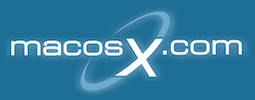Harp
Raised by wolves
Does anyone know how I can switch the jumpers (or what that means) in order to turn a firewire scratch into a primary volume?
Read this post: http://macosx.com/forums/showthread.php?t=277935
My OS seems to be nonexistant or at least lying dormant and the only access I have is of the OSX Tiger install CD.
I was installing a system update when my system crashed and I am trying to install OSX onto a scratch and boot it with my primary drive as a slave in order to finish installing the failed update. The problems are explained in more detail in the linked thread.
Any help would be greatly appreciated and hopefully will keep me out of the Genius Bar.
Read this post: http://macosx.com/forums/showthread.php?t=277935
My OS seems to be nonexistant or at least lying dormant and the only access I have is of the OSX Tiger install CD.
I was installing a system update when my system crashed and I am trying to install OSX onto a scratch and boot it with my primary drive as a slave in order to finish installing the failed update. The problems are explained in more detail in the linked thread.
Any help would be greatly appreciated and hopefully will keep me out of the Genius Bar.

